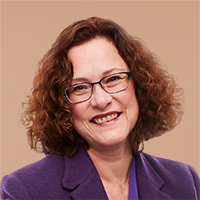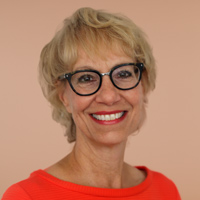How to Make a Million (or More!)
Four success stories — and guidance on how you, too, could reach this milestone.

There’s more than one route to riches. Among the people featured here, one couple earned their first million by buying rental properties, and another amassed seven figures—and retired early—through a combination of saving and smart investing.
What these success stories have in common is passion, patience and persistence—and a vision for what their wealth can achieve. Money may not buy happiness, but having more of it gives you the freedom to make choices that can bring satisfaction, whether that means buying your dream home, escaping the 9-to-5 grind or giving generously to charity.
The Entrepreneur
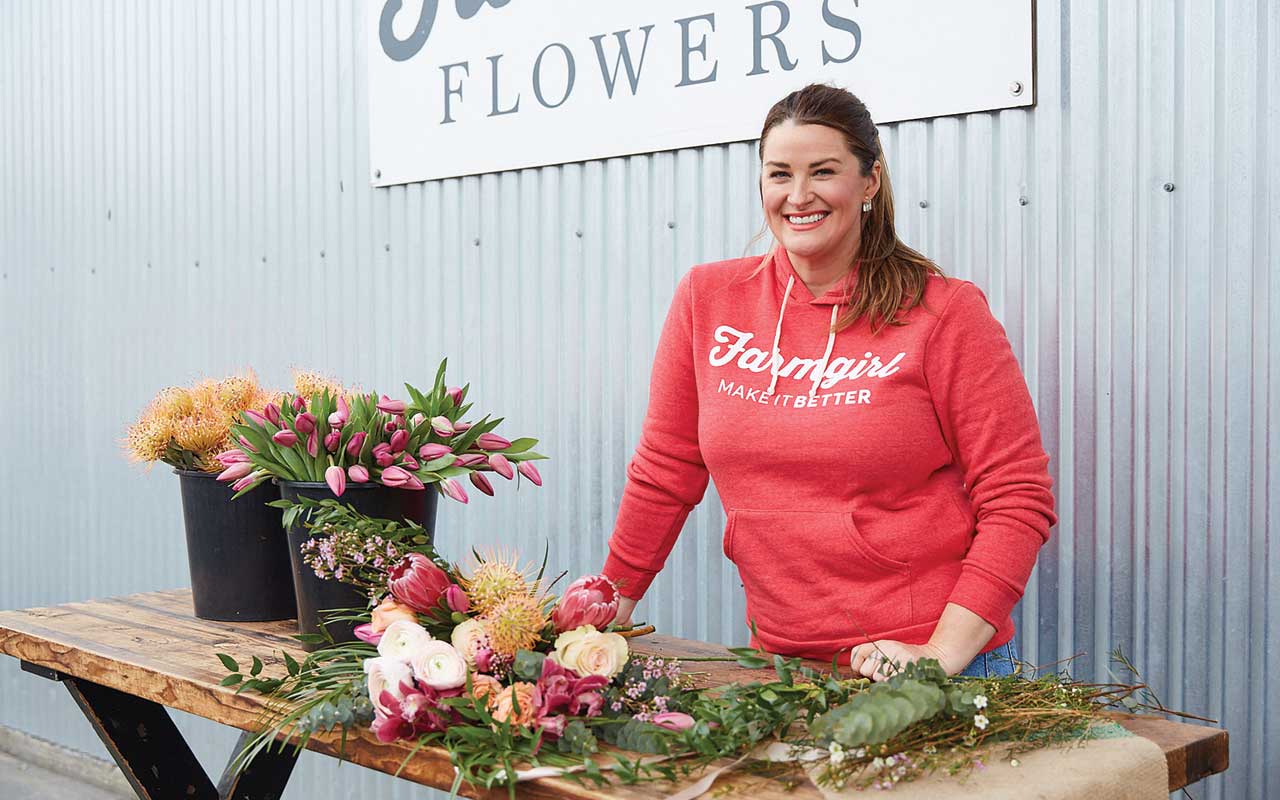
Christina Stembel didn’t just bend the traditional business model for flower companies; she snipped it in half.

Sign up for Kiplinger’s Free E-Newsletters
Profit and prosper with the best of expert advice on investing, taxes, retirement, personal finance and more - straight to your e-mail.
Profit and prosper with the best of expert advice - straight to your e-mail.
Stembel grew up on a farm in Bremen, Ind. (population 4,500), so it’s tempting to say that she founded Farmgirl Flowers to get back to her roots. But the real inspiration for her business came while she was working as an event planner near San Francisco in the mid 2000s. Tasked with cutting expenses, Stembel, now 41, looked for ways to reduce the costs of floral arrangements, which she thought were overpriced and underwhelming. She started ordering directly from local growers, which led her down a rabbit hole of research into the business of flowers. She concluded that the e-commerce side of the industry was ripe for disruption because a lot of people—particularly young people—weren’t satisfied with the floral arrangements available online.
“Younger consumers were purchasing far less often than previous generations, for the same reason I hated sending my mom flowers—they didn’t like what was out there,” she says. “You spend an hour sorting through options on websites to find the least ugly option, which shouldn’t be the thing you say about flowers.”
Stembel’s idea: Instead of adopting the model of the big flower companies’ websites, which offer everything from red roses to Asiatic lilies, she would sell only one arrangement that changes daily, based on what’s in season. Stembel launched Farmgirl Flowers in 2010 with $49,000 in savings. In 2015, the company started taking orders outside the Bay Area, relying primarily on social media and word of mouth to drive traffic to its website.
Last year, annual revenues topped $23 million. Stembel now has more than 100 employees—including on-staff bicycle and car couriers who deliver locally—and plans to establish six distribution centers throughout the U.S., which will expand the business and reduce shipping costs.
The most-successful entrepreneurs scale up with an eye toward selling to a larger company, and that’s what Stembel envisions for her enterprise. Right now, she’s investing most of her money in the business (she pays herself $50,000 a year and lives in a one-bedroom apartment with her husband, Neil) so she can expand as quickly as possible over the next five years or so. At that point, she’d like to sell the company and use the proceeds, along with everything she’s learned, to launch another venture.
The Real Estate Investors
As a student paying his way through college at Eastern Kentucky University, Jason Rector got tired of paying rent. “Every time I wrote the rent check, the landlord’s net worth was going up, and mine was going down,” he says. That motivated Rector to buy his first house. It was 2006—before the housing crash—but properties in Richmond, Ky., were affordable. He bought a three-bedroom, two-bathroom home for $117,000 with a $4,100 down payment, using savings from the mowing business he ran while in high school.
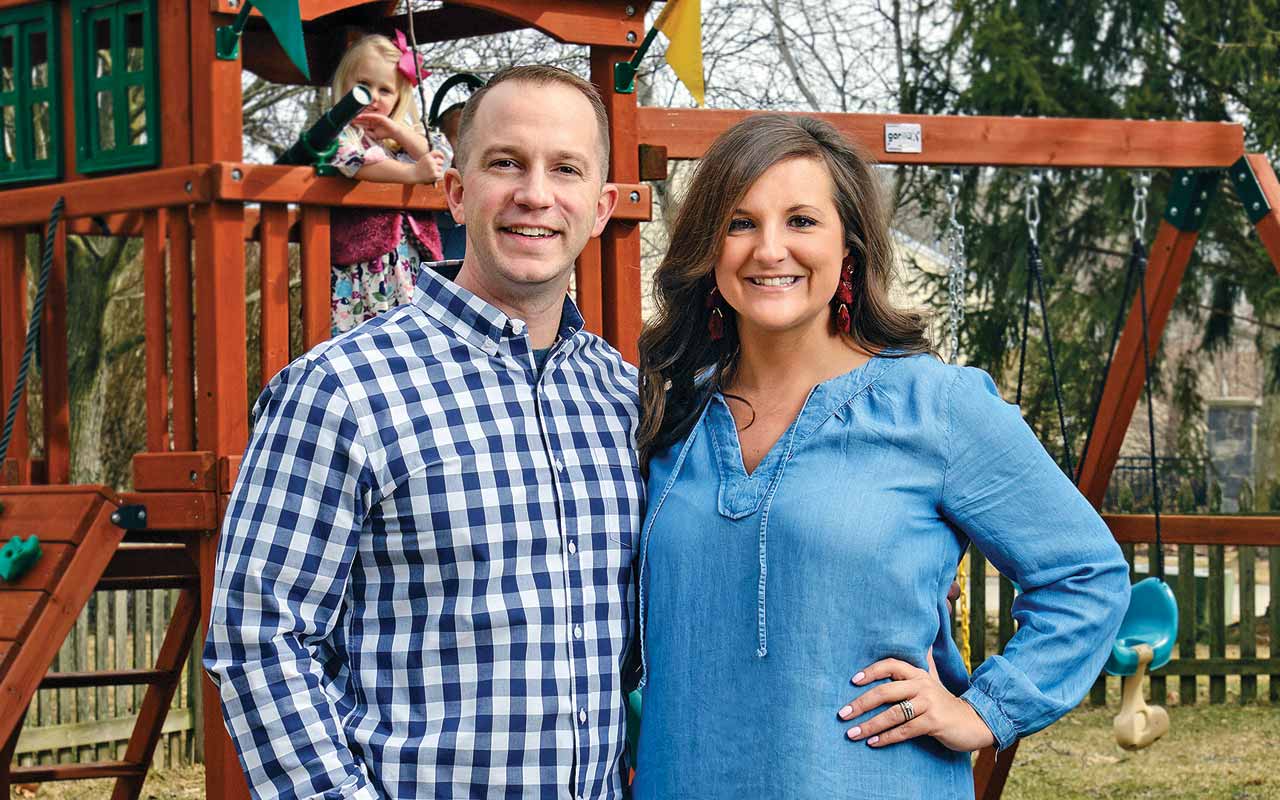
Rector finished the basement himself, adding two more bedrooms and another bathroom, and invited four friends to rent from him. That paid his mortgage and expenses while he lived rent-free. The next summer, he bought a second house for $135,000. His younger brothers, who followed him to college at Eastern Kentucky, lived in and managed the houses after Rector returned to his hometown, Champaign, Ill., in 2008.
Back home, Rector began his career as a firefighter, but he had caught the real estate bug, and he kept buying. Today, Rector, 34, owns and manages 93 rental properties, with an eight-figure total value. Rector says his wife, Lisa, 33, is a big key to his success. She’s a real estate agent with Keller Williams and a top agent in her market. She helps find properties they can buy for 10% to 20% below market value—mostly apartment houses and single-family homes near the campus of the University of Illinois. The homes may be torn up or dated. Or they could be foreclosures or short sales. Lisa negotiates the deals, and Jason improves the properties.
Jason says that since the down payment on the first house, he hasn’t put a cent of his own money into the business. When he’s ready to buy, he taps his line of credit to pay the purchase price plus the cost of renovation. When he rents out the property, he takes the lease to the bank and the banker orders a new appraisal. Based on the new value of the property and anticipated rental income, Jason takes out a new, 15-year commercial mortgage. He uses the loan proceeds to replenish the line of credit and pays down the loan with the rent he collects.
Investing for the long haul. The Rectors keep properties for at least five to 10 years. Jason will sell if he can find a buyer willing to pay more than market value or if he can cash in on home-price appreciation to buy a larger property with more units. “My approach to real estate investing isn’t get-rich-quick,” he says.
Jason, who still works 52 hours a week as a firefighter and recently launched a construction company, used to manage and maintain the properties himself, and he says he never evicted a tenant. Now he employs 20 people as well as his two brothers and his mother. “I get to do the fun stuff, focusing on acquisitions and starting new businesses,” he says.
“I’ve learned that to be successful, you must have a why, and the bigger the why, the more successful you can be,” says Jason. Jason’s work as a firefighter gives him the opportunity to make someone’s day better, he says. The couple give 10% of their income to their church, they’re active in the local United Way, and they’re founding a nonprofit to pursue community mentorship and international aid. “The more money we make, the more we can give away,” says Jason.
The Rectors live comfortably but don’t need a “crazy, fancy lifestyle,” Jason says. In 2018, they bought a lake house that they share with family and a new group of guests each weekend. They gave each of their two children a rental property on their first birthdays, and as the kids get older, they’ll help manage the property. When the children reach college age, they can use their houses to generate money for school, income or seed money to start their own businesses.
How to Make Money in Real Estate
Since the bottom of the housing market in 2012, median home prices nationally have risen by 53%, according to Clear Capital, a provider of real estate data and analysis. Is it too late to make money in real estate investing? Not if you find a property selling for a discount and manage it well. Real estate investors offer some key strategies:
Location, location... Look for properties in economically stable neighborhoods where you can expect long-term price appreciation and a large, consistent pool of prospective tenants. That’s often at the entry level of the market.
Run the numbers. Look for cash flow—rent minus all expenses, including any management fee and a reserve fund in case of vacancies—of a few hundred dollars a month. Or you might be content to break even each month and wait for the home to appreciate. Use BiggerPockets.com's Rental Property Calculator to assess a property’s potential.
If you don’t have the skills and time to manage a property, or it’s in another city, you’ll need to hire a property management company. You can expect to pay a monthly fee of about 8% to 12% of the rent you receive, plus a separate leasing fee, which varies from one-half to a full month’s rent.
Use other people’s money. Ideally, you’ll put down as little of your own money as you can, borrow the rest and charge enough rent to pay the loan. You’ll pay more for a mortgage on an investment property than you would for your own home. The requirements you must meet to get a mortgage on a rental property vary depending on whether you intend to live on-site and on who is backing the mortgage (Fannie Mae, Freddie Mac, FHA or VA). If you have enough equity in your current home, you could take out a home-equity line of credit against it to buy the property.
The Financial Planner
Jennifer Myers may have picked one of the worst times in recent history to launch her financial-planning business. Myers, 47, started SageVest Wealth Management in 2007, just as the U.S. was on the verge of an economic meltdown. “People were scared of advisers and the market in general, let alone working with a relatively new and small company,” she says. Clients who signed on with her needed a lot of hand-holding to get through what was an extremely harrowing time.
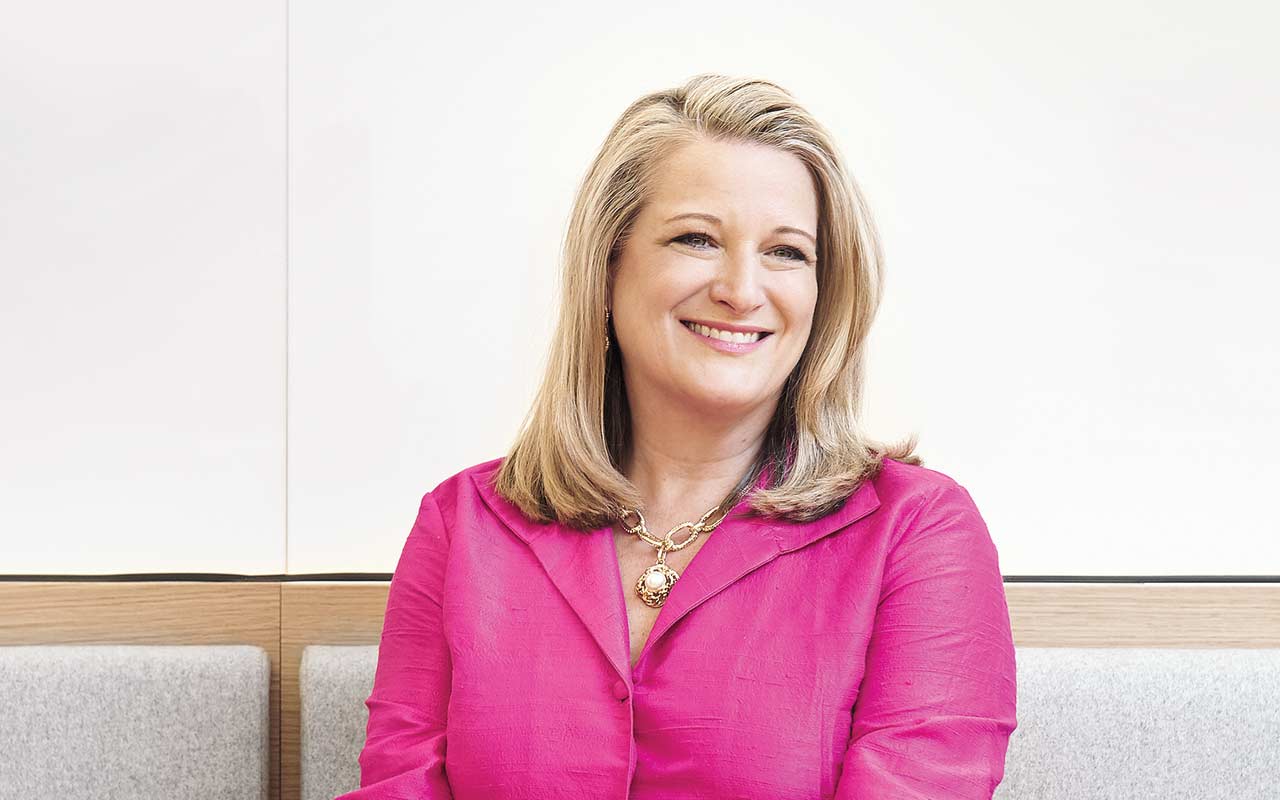
Myers says her business began to grow as the economy recovered and investments she made during the downturn paid off. When she started her firm, in McLean, Va., she had about $40 million in assets from clients she brought with her from a wealth management firm; today, she manages about $200 million. She’s a fee-only planner who charges between 0.5% and 1% of assets for financial planning and investment management. As her business has grown, she’s been able to hire two other financial advisers and a director of client services, and she is preparing to add another adviser to her team.
Myers, a certified financial planner, put herself through college and earned an MBA from George Washington University, in Washington, D.C. She worked as a partner with a wealth management firm for 10 years before launching her own business, and during that time, she saved about half of her income. “That allowed me to get through a lean period,” she says.
She attributes much of her success to her focus on developing long-term relationships with her clients, helping them with everything from making large charitable gifts to paying for a child’s stem-cell treatment. Too often, she says, financial-planning firms are more interested in generating new business—and assets under management—than working with the clients they already have.
Myers has also had to learn how to turn challenges into opportunities. Financial planning has long been a male-dominated business, and Myers sometimes had a hard time getting people to take her seriously when she launched her firm. But she also found that many women are more comfortable working with a female planner. “More women are making the financial decisions in the household,” she says. “They want someone who understands them and how they think.”
Giving back. In 2017, Myers launched SageVestKids, a free financial-literacy site for children ages 3 to 18. Her goal is to help the next generation learn good money management skills. “We have a financial crisis of people not being prepared for retirement,” she says.
The growth of Myers’s business has allowed her to fulfill some of her lifelong goals. As a single mother, she was able to adopt two children—her daughter, age 4, and her son, who is 19 months old. She has provided financial assistance to her extended family. Plus, she had the resources to recover from a financial hit that would have bankrupted many families. In 2015, she and her newly adopted daughter had to move out of their home in Northern Virginia after mold in the basement ceiling made them seriously ill. After paying thousands of dollars for mold removal—which wasn’t covered by insurance—she sold the house and bought a home closer to her office.
Her advice to aspiring business owners? You’ll probably be married to your job, so make sure you have the time to make the commitment. Have enough financial resources to get through the tough times, along with a Plan B in case your business plan doesn’t work out.
How to Start a Business
Launching a successful business can make you a millionaire, but the path to wealth will take dedication and hard work.
Create a business plan. It should outline the type of business you want to launch, your competitive strategies and your goals. Also include the company’s organizational structure, start-up costs, projections for sales and profits, and a break-even analysis. You can find more information about creating a business plan at the Small Business Administration website.
Find the money. Your business plan will help you figure out how much money you’ll need to launch your venture. If you need to borrow and can’t get a traditional bank loan, consider a Small Business Administration loan. These are loans issued by banks but guaranteed by the SBA, which reduces the lender’s risk. To find lenders that offer SBA-guaranteed loans, go to www.sba.gov/funding-programs/loans/lender-match.
Ask for advice. Don’t overlook sources of free help from veteran entrepreneurs. Your alma mater’s alumni network is one potential source of mentors. You can also get advice from 10,000 small-business volunteers through Score, a small-business nonprofit supported by the SBA (www.score.org). Score also offers free business tools and free or low-cost workshops across the U.S.
Take advantage of tax breaks. Starting in 2018, small-business owners, sole proprietors, freelancers and people with side gigs can deduct up to 20% of their qualified business income—net income after they’ve claimed business deductions—before they calculate their tax bill.
If your total taxable income—which includes interest and dividends, as well as income reported on Form W-2 if you also have a regular job—is less than $160,700 on an individual return or $321,400 on a joint return, you can deduct 20% of your qualified business income no matter what type of business you’re in. Once your qualified business income exceeds those levels, however, the tax break may shrink or disappear.
For example, in an effort to prevent affluent professionals, such as doctors and lawyers, from gaming the system, Congress created a higher standard for professionals who provide personal services. For these business owners, the deduction phases out once 2019 total taxable income exceeds $160,700, or $321,400 for married couples, and disappears once taxable income tops $210,700 for singles and $421,400 for couples.
The Supersavers

Tim and Amy Rutherford of Parker, Colo., have long been good savers. Tim, 52, who spent his career in telecommunications equipment sales, started maxing out his 401(k) with his first job out of college and invested in taxable accounts as well. Amy, 50, who worked in sales for media companies, regularly socked away her commissions, which some years amounted to half her base salary or more.
The Rutherfords, who married in 2008, say they always spent less than they earned—typically $200,000 a year, depending on commissions. Then, after a trip to London and Paris in 2014, they promised themselves they would take their savings to a whole new level. The vacation was rushed and interrupted by work e-mails and worries about sales quotas. “We had to hustle back to work with jet lag,” says Amy. After that, their goal was to achieve financial freedom so they could retire in their mid fifties.
Based on their spending at the time, the Rutherfords estimated they would need $120,000 a year to live on in retirement. That would require them to amass a $3 million nest egg. “Having this end goal really changed our spending,” says Amy. In 2015, they got rid of their biggest expense: a 6,000-square-foot house. They moved into an 1,800-square-foot townhouse they had been renting out. “We fell prey to lifestyle inflation,” says Tim. “We bought nicer cars. We bought a bigger house.”
They also began to question each purchase, asking whether it was necessary or could be achieved more cheaply. For instance, instead of buying season tickets to the theater, they volunteer there and see shows for free. They dine out less and have become better cooks. They say they now live very comfortably on $36,000 a year.
Reaching retirement. The Rutherfords kept a monthly tally of their net worth to see if they were meeting their retirement savings target. Decades of saving had brought them close to a seven-figure nest egg, but their switch to a more frugal lifestyle allowed them to accelerate their savings. (Tim, who has three children from a previous marriage, has also set aside money in a 529 college-savings plan to help with tuition bills if they choose to go to college.)
The Rutherfords figured that they no longer needed $3 million to maintain their lifestyle in retirement and could retire years ahead of schedule. Amy retired in April 2015. Tim left his full-time job the same year, although he remained as a part-time consultant with his employer until June 2017.
They live on savings, interest, dividends and capital gains from their taxable accounts instead of tapping tax-deferred accounts that carry penalties for early withdrawals. Their biggest expense is insurance—health, auto and home—which accounts for 20% of their annual spending.
All the cost-cutting has not curtailed their traveling, which ignited their desire to retire early in the first place. Last year, they spent 107 days traveling—about half of that time in Europe—and often kept costs down through one of their favorite travel hacks: house-sitting. In exchange for a free place to stay, the Rutherfords watch the residence—and often the pet—of a homeowner who is away. (They find housesitting gigs on the site www.trustedhousesitters.com.)
The couple have launched a blog and a YouTube vlog—both called GoWithLess—to teach others how to do what they’ve done. Tim says it’s difficult to persuade others to accept a supersaver lifestyle until they’ve bought, say, fancy cars or a big house and come to realize they don’t need them.
The Rutherfords aren’t done downsizing. They plan to sell their two cars and townhouse so that next year they can travel the world.
How to Save a Million
Some of us are naturally big savers; others need to work at saving until it becomes a habit. If you’re in the latter category, here are some tips to help you sock away more money.
Set a goal—or two. Having something to aim for will keep you motivated to save. But the goal shouldn’t be some arbitrary number. Rather, envision your goal—say, retiring early to the Caribbean—and then calculate the numbers you need to make it happen. Be realistic. Just like with a diet, if your savings target is too ambitious and requires too much sacrifice, you likely won’t stick with it.
Know where your money goes. Tracking where your paycheck goes will make it easier to find ways to cut expenses. Consider using a free budgeting tool, such as Mint.com or PersonalCapital.com.
Pay off high-cost debt. It’s tough to build up savings if you’re being dragged down by high-interest-rate debt, such as credit cards at 18% annual interest. In fact, paying off this financial albatross should be one of your goals.
Automate your savings. In addition to having 401(k) contributions deducted automatically from your paychecks, arrange to have money transferred regularly from your bank account into a Roth IRA or investment account with low-cost mutual funds or exchange-traded funds. Most employers with a 401(k) will match workers’ contributions, usually up to 3% of pay. Make sure you contribute enough to get this free money, although your goal is to max out annual contributions. The contribution limits are $19,000 in 2019, or $25,000 if you’re 50 or older.
Seek support. Reformed spenders may find themselves out of sync with old friends. But thanks to social media, supersavers have many avenues to connect with each other. A good place to find like-minded savers is the r/financial independence online community on Reddit, which has close to 530,000 subscribers.
How to Invest the Right Way
The decade-long bull market in stocks has helped increase the number of millionaire households in the U.S. to nearly 7.7 million, or about 6.2% of total U.S. households. That means they hold $1 million or more in investable assets, excluding the value of real estate, employer-sponsored retirement plans and business partnerships.
No doubt some of those millionaires hit the jackpot in a hot stock or two. But too many investors over the years have learned that you can easily go bust investing in what you think is the “next big thing.” A more reliable way to amass an investing fortune is to follow a few tried-and-true rules for building a healthy portfolio. Among them:
Start early. Time and compounding interest are an investor’s best friends. Assuming an 8% annualized return on his or her portfolio, a 20-year-old could amass $1 million by age 67 by investing a little over $2,000 a year. A 40-year-old earning the same return could invest $10,000 a year and still wouldn’t crack a million by retirement age.
Cut costs. You can’t control how your investments will perform, but you can control what you pay for them. Over the course of decades, paying a fraction of a percentage point more in fees can chisel thousands from the value you end up with. Assess your portfolio and jettison expensive mutual funds in favor of cheaper options. Vanguard Total Stock Market ETF (VTI, $145), a member of the Kiplinger ETF 20, the list of our favorite exchange-traded funds, tracks the performance of the entire U.S. stock market and charges just 0.04% of assets.
Diversify. Don’t put all your (nest) eggs in one basket. Spreading your assets among different types of investments increases your portfolio’s chances of withstanding sharp drops in one corner of the market or another. Owning a mix of stocks, bonds and cash may cause your portfolio to lag when stocks are going gangbusters, but you’ll hold up better when stocks slide. When Standard & Poor’s 500-stock index plummeted 37% in 2008, the average balanced mutual fund with 50% to 70% of assets in stocks and the rest in bonds and cash surrendered only 27.5%. A good choice is Vanguard Wellington (VWELX). A member of the Kiplinger 25, it’s among our favorite actively managed funds.
Focus on dividends. Those quarterly payouts count. From 1930 through the end of 2017, reinvested dividends contributed 42%, on average, to the total return of the S&P 500. To boost your exposure to dividend-paying stocks, consider Kiplinger ETF 20 member Schwab U.S. Dividend Equity (SCHD, $52), which yields 3.1%.
Is $1 Million Enough to Retire?
At the end of the fourth quarter of 2018, Fidelity Investments reported that 133,800 of the retirement accounts it manages had a balance of $1 million or more. That’s only a small percentage of the company’s accounts, but the number of 401(k) millionaires has been rising steadily, and these savers are often seen as role models for workers who dream of a financially carefree retirement.
The reality, though, is that $1 million isn’t what it used to be, and in some cases, it may fall short of the amount you’ll need to finance your preferred lifestyle in retirement. If you follow the 4% withdrawal rule—which is designed to ensure you won’t run out of money—a $1 million balance will allow you to take out $40,000 the first year, then adjust annually to account for inflation (see Make Your Money Last Through Retirement). Whether that will be enough (or more than you’ll need) depends on a host of factors, including whether you have a pension and how much you’ll receive in Social Security benefits. Remember, too, that you’ll have to pay federal income taxes on every dollar you take out of a 401(k) or other tax-deferred account. Your state may take a bite out of your withdrawals, too.
When calculating how much you’ll need, it’s critical to get a handle on your living expenses in retirement. One common rule of thumb is that you should plan on replacing 70% to 80% of your preretirement paycheck with withdrawals from your portfolio, Social Security and other income (such as a pension). But some baby boomers who want to travel and engage in other pursuits spend more than 100% of their preretirement income during the first few years, says Dennis Nolte, a certified financial planner in Winter Park, Fla. “If you’ve been looking forward to this date for 30 years, you’re not going to stay at home,” he says.
Even if you do plan to stay home, health care expenses could consume a large portion of your savings. Fidelity Investments estimates that a 65-year-old couple will need $280,000, on average, to cover health care and other expenses in retirement. Your expenses will depend on your health and the likelihood that you’ll need long-term care (see How to Afford Long-Term Care).
Whether $1 million is too much or too little, it’s a worthwhile goal—and it’s not out of reach if you start early. If you save $325 a month starting at age 25 and earn an average annual return of 8%, you’ll have more than $1 million by the time you’re 65. If you wait until age 30, you’ll need to set aside $500 a month to reach a million.
Get Kiplinger Today newsletter — free
Profit and prosper with the best of Kiplinger's advice on investing, taxes, retirement, personal finance and much more. Delivered daily. Enter your email in the box and click Sign Me Up.

Block joined Kiplinger in June 2012 from USA Today, where she was a reporter and personal finance columnist for more than 15 years. Prior to that, she worked for the Akron Beacon-Journal and Dow Jones Newswires. In 1993, she was a Knight-Bagehot fellow in economics and business journalism at the Columbia University Graduate School of Journalism. She has a BA in communications from Bethany College in Bethany, W.Va.
